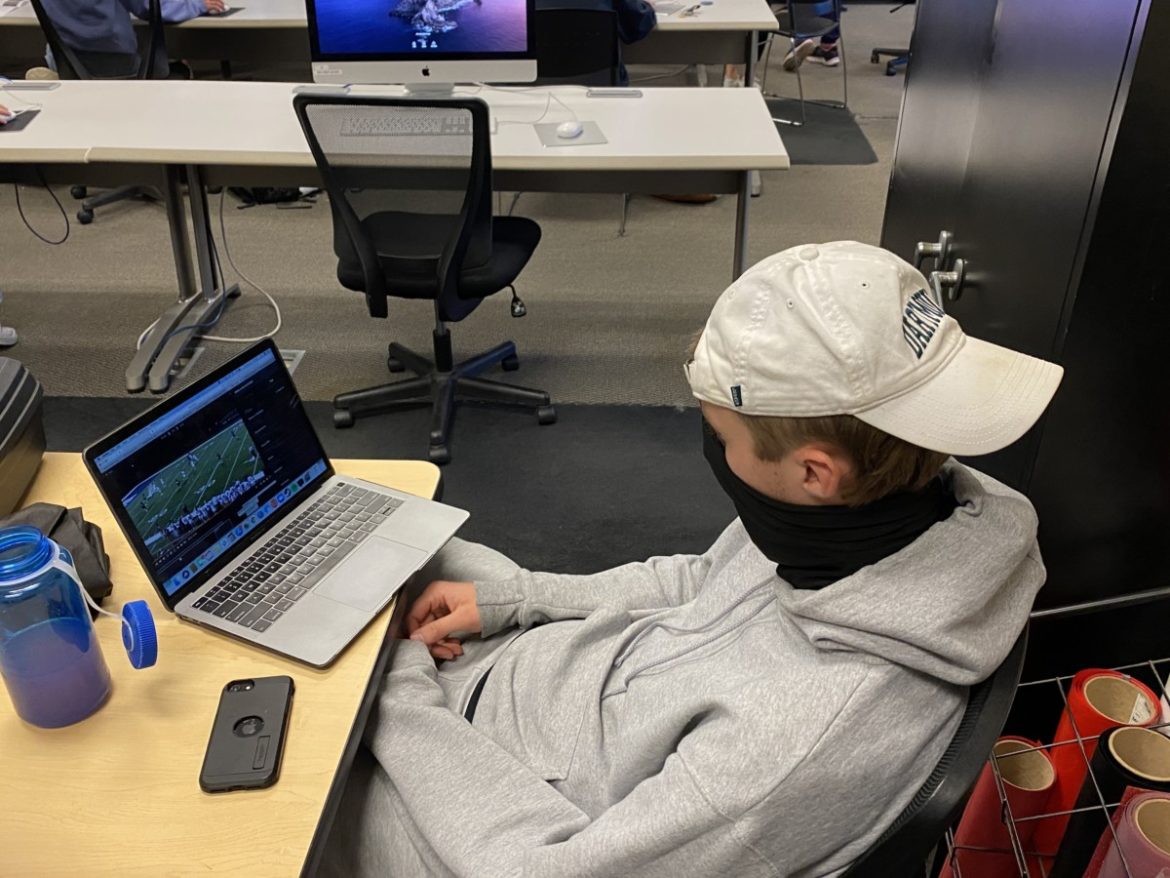Chris Harrison, Reporter
You may only think of sports teams practicing on the field, and playing games. We only see athletes in action during games. However, coaches and players do much more behind the scenes than you might think, like studying film (the replay of a past game that a sports team has played).
Whether it is re-watching games of their own, or scouting their opponents, film comes in handy to both coaches and players. Both the NCHS boys and girls basketball teams and the varsity football team use film to their advantage.
Leo Magnus, a captain of the boys varsity basketball team, said that “not taking things personally, and being open to constructive criticism” is an important thing to remember while watching film. Magnus takes basketball quite seriously, as he is going overseas to Israel this summer to play basketball. He uses film as a way to “see my mistakes and correct them the next time during a game-situation. . . I look for ways I can improve my game and areas of weakness in opponents,” Magnus said.
The average film session lasts around an hour, and the “whole team watches together, including all coaches and players,” Magnus said. However, players can access film whenever they want.
Magnus spoke about a key difference in basketball film to any other sport’s films. “Unlike many sports, in basketball players play both offense and defense, which can really expose someone’s weakness on either side of the court,” he said.
When watching film for football, Silvestri says you “watch film differently depending on the purpose of what you are watching it for: scout, execution, accurate self assessment, coaching, and playing.” When scouting the other team via film is crucial to the sport. “We watch what our opponents do, like what plays they call based on the situation, what teams have success with, and break down how they block, and what techniques they use.”
Studying film for execution is also important for the team’s unity. “Are we all on the same page? Who is and who is not? If multiple players aren’t understanding, we as the coaches need to rethink how we are teaching the plays,” Silvestri said. “However, if only one or two players are not understanding it, we may need to play someone different, or get them caught up.”
Lastly, there is accurate self assessment, or ASA. “Accurate self assessment comes when watching individual techniques, and play making abilities,” Silvestri said. “We are able to see detailed mistakes we make with fundamentals, and how we are competing at an individual level.” ASA can be used in this way to “give immediate accurate feedback to the player and coach” he added.
So, the next time you are watching a football, or basketball game, think about the work that the athletes do off the court. The tactics of studying film help, the player and fellow teammates learn play styles and play calls.




